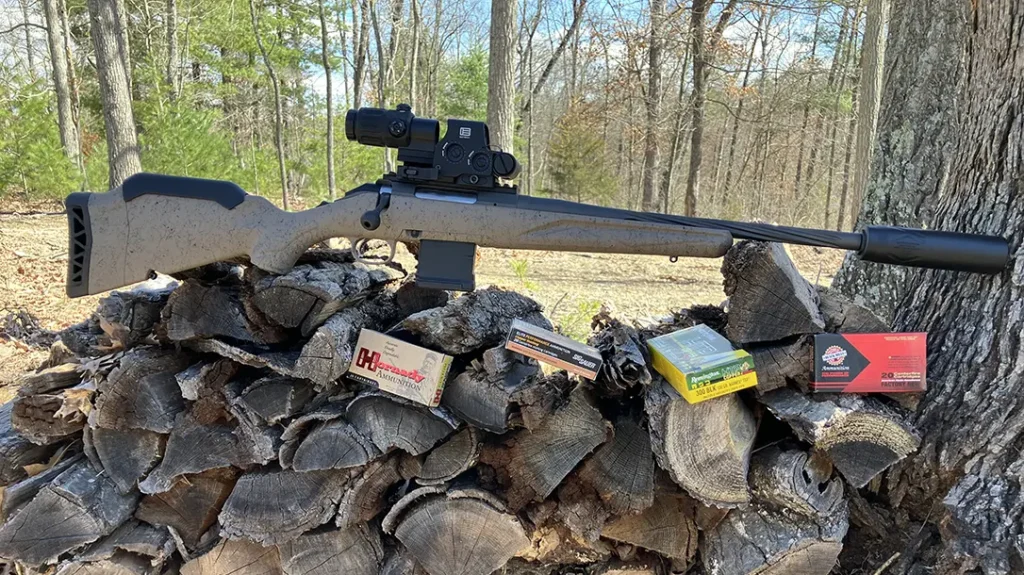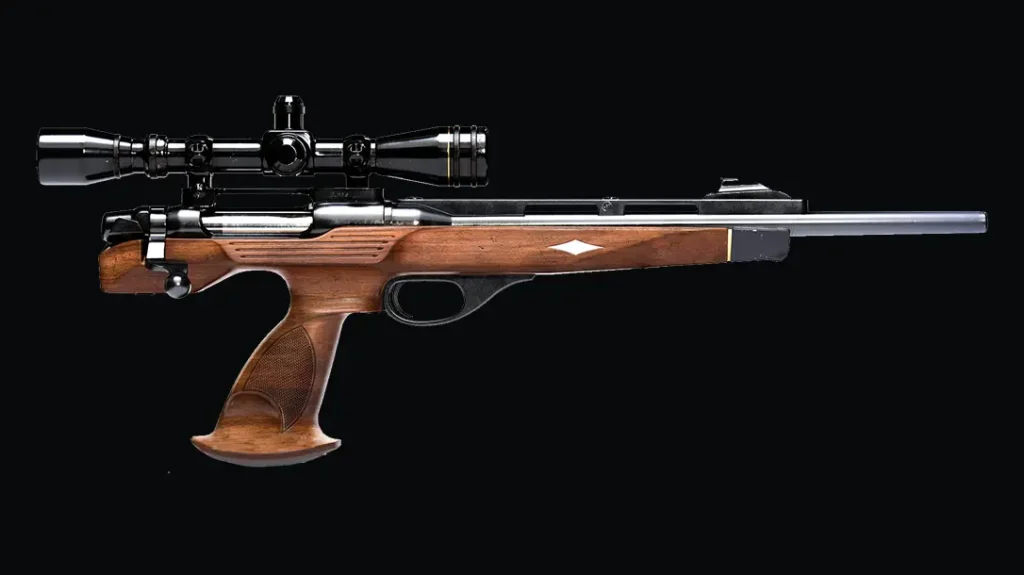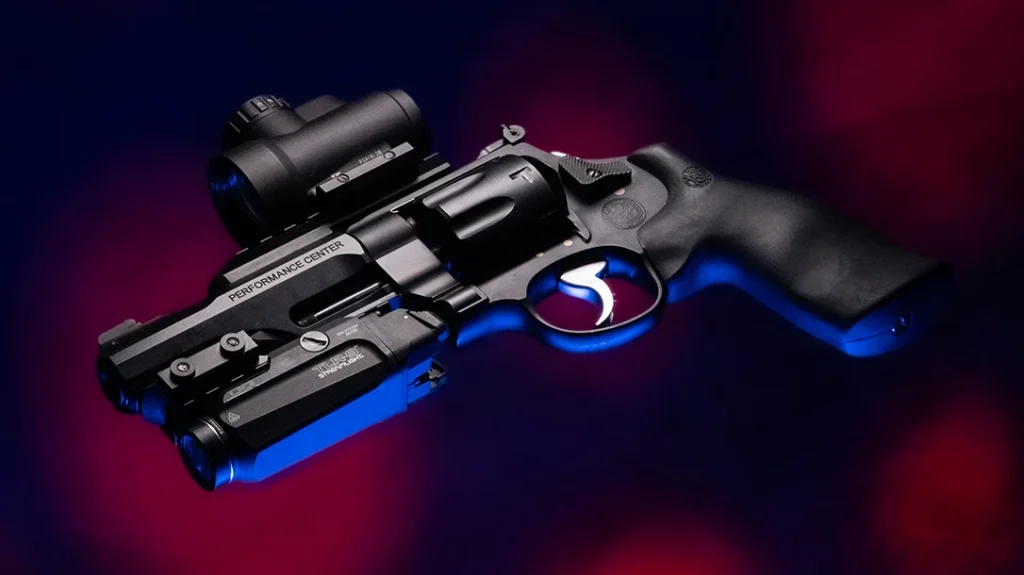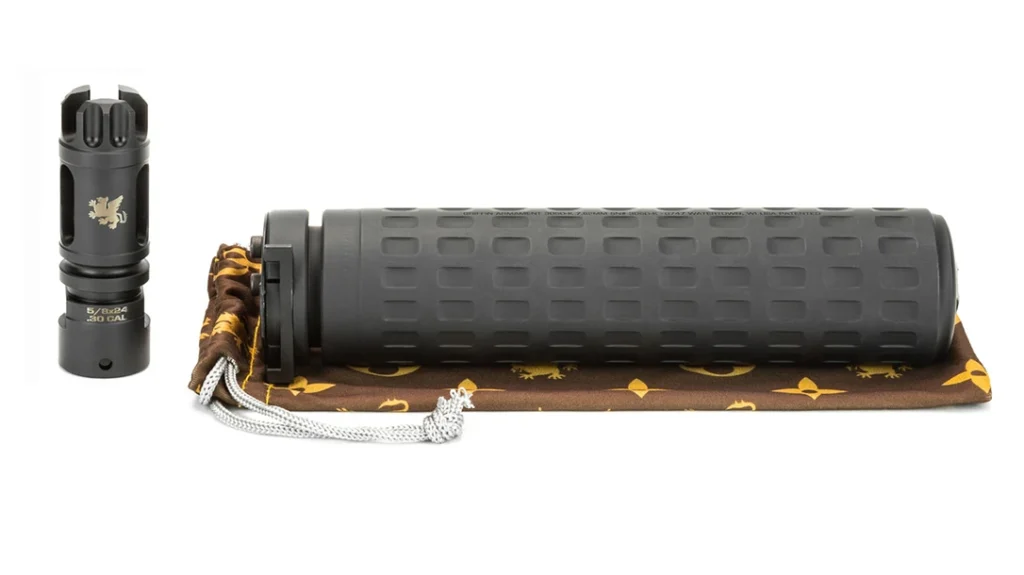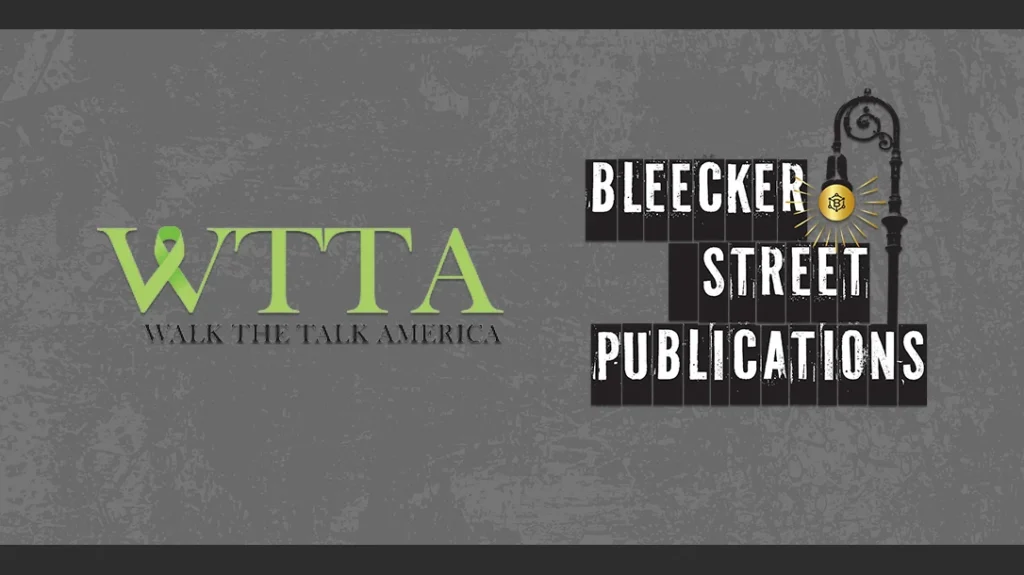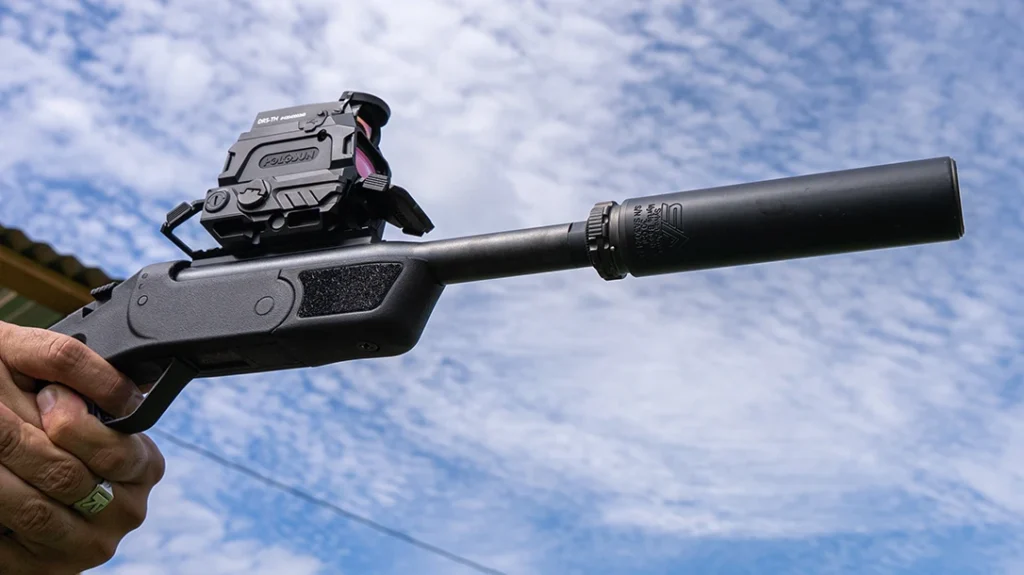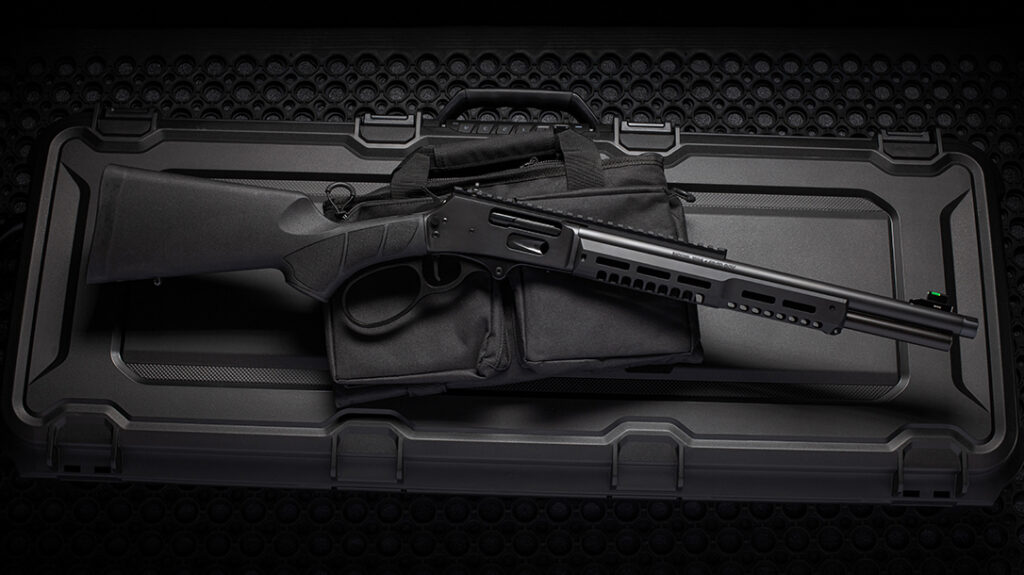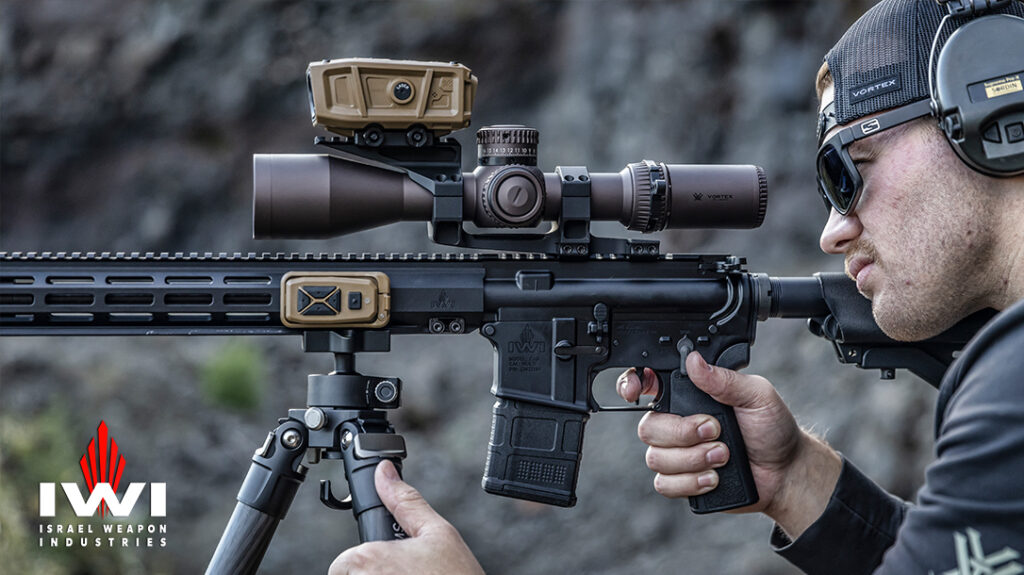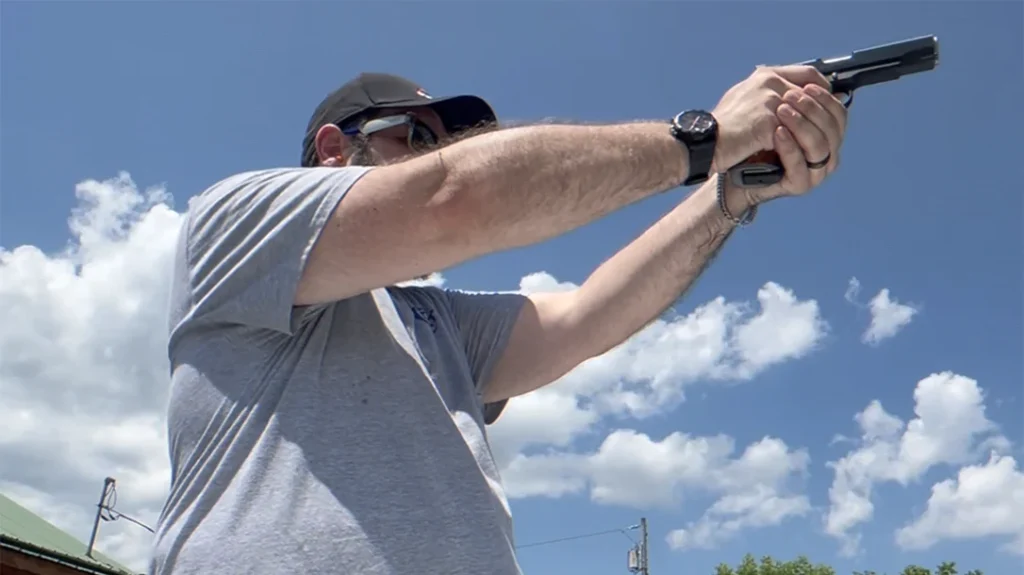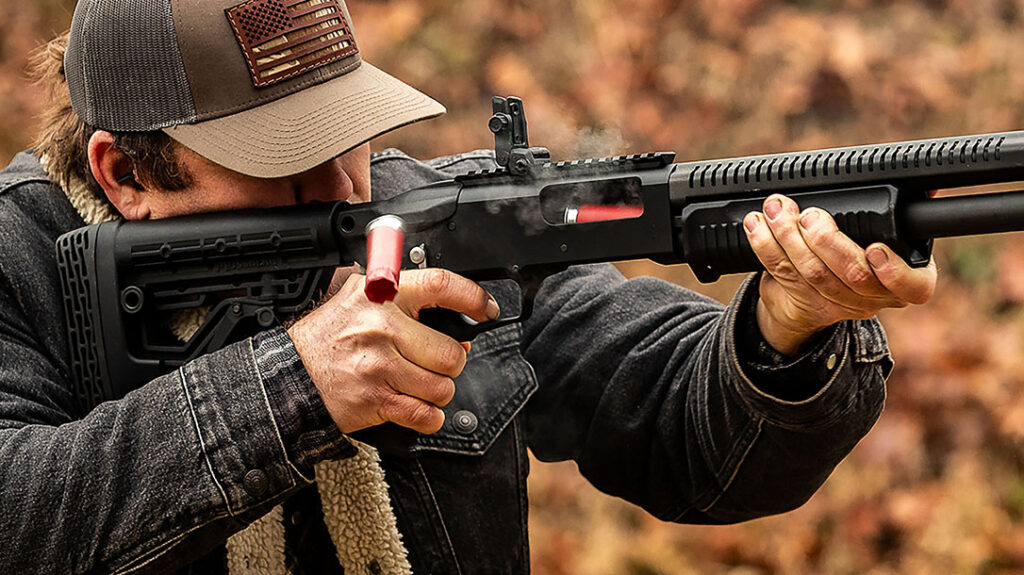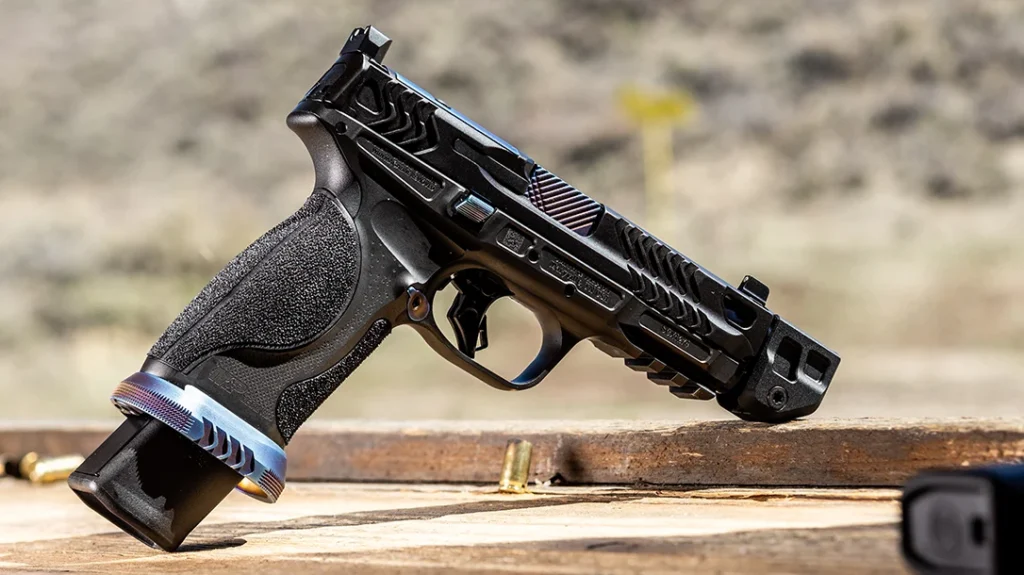The Genesis Of The Smith & Wesson J-Frame
According to the History of Smith & Wesson, by Roy Jinks, the idea for the Chiefs Special originated in 1949.
C. R. Hellstrom asked the engineers to design a small frame revolver that would accommodate the .38 Special cartridge. The new frame was designated as a J-frame. This design consisted of a traditional double action revolver with a five shot capacity. While much of the design was in line with Smith & Wesson’s customs, the new J-frame incorporated a coil mainspring with a strut–instead of a flat mainspring.
The design was specifically aimed at providing a new and more powerful revolver for law enforcement. In the fall of 1950, the International Association of Chiefs of Police held its annual meeting in Colorado Springs, Colorado.
Advertisement — Continue Reading Below
Smith & Wesson the new J-frame at this gathering and asked the Association to suggest a name for it. Not surprisingly, the name that gathered the most votes was “Chief’s Special”, and a legend was born.
Initially, the Chief’s Special shipped with a round-butt and a 1 ⅞ inch barrel. Finish choices were either blued or nickel. Later, Chief’s Specials began including square-butt frames and 3 inch barrels.
In 1952, Smith & Wesson introduced the Chief’s Special Airweight. This variant featured an aluminum alloy frame. In 1957, Smith & Wesson famously changed from model names to model numbers, and the Chief’s Special became Model 36, while the alloy variant turned into the Model 37.
Advertisement — Continue Reading Below
Finally, in 1965 Smith & Wesson made history by introducing the stainless steel version of the Chief’s Special, the vaunted Smith & Wesson Model 60.
J-FRAME FEVER

My history with the Model 36 started in Fairbanks, Alaska. In 1976, I purchased a nickel version. When I started my law enforcement career in 1978, that nickel Model 36 was my on-duty backup and my primary off-duty pistol. I found that the nickel finish held up well to the south Georgia heat and humidity. Its maintenance consisted of periodically lightly buffing it with semi-chrome polish to remove any discoloration. To this day, that revolver looks almost as good as the day I purchased it. It has ridden many miles by my side until 1989, when I upgraded to the hammerless Smith & Wesson J-frame Model 640 Centennial.
Advertisement — Continue Reading Below
Over the years, my collection of J-frames has increased and I have come to appreciate both the shrouded hammer Bodyguard and the concealed hammer Centennial models.
However, for pure nostalgia, the original blued steel Chief is my heart’s first choice.
Unfortunately, Smith & Wesson stopped producing the classic Chief’s Special / Model 36 after it transitioned to the stainless Magnum J-frame style with the longer 2.13 inch barrel.
Advertisement — Continue Reading Below
The Classic Chief: A New Model 36

Some years back, Smith & Wesson started resuscitating older revolvers under the S&W Classic series. Since then many had been holding out hoping that Smith & Wesson would re-introduce the Model 36. Well, this year it finally did. Smith & Wesson launched the new Model 36 Classic at SHOT Show 2025. This latest variant blends both modern and retro features wonderfully. It brings back memories of the old detective shows and movies that, in the 50s and 60s, captured the imagination of so many young boys.
The new Model 36 Classic is built on the existing production magnum J-frame. You can tell by looking at both the new contour of the rear of the frame and the ridge on the right side, just below the recoil shield. Though metal-injection-molded, the “new” Model 36’s hammer and trigger have a “color case” finish which is a very nice feature. The smooth trigger and checkered diamond stocks are appreciated. So is the original checkered thumb piece design for the cylinder release.
Advertisement — Continue Reading Below
I really appreciate that Smith marked the right side of the frame with the old-school four-line manufacturer’s information including the “Marcas Registradas” moniker. Another appreciated detail are the revolver’s nicely broken edges. Instead of traditional bluing, this J-frame has a deep blue nitride finish. It looks old-school, but it is significantly more durable. Topping it all off is an even more old-school thin, rampless barrel with a half-moon front sight that harkens back to the 1950s!
I swear that I can hear the Dragnet theme song in the background! Last, but not least, the new Classic Chief does not have the internal safety lock.
Shots Fired

Advertisement — Continue Reading Below
The Classic Smith’s double-action trigger pull exceeded the limit of my Lyman Electronic Trigger Pull gauge. However, the single action broke cleanly at 3 lbs. 9 oz. While heavy, the double-action pull felt clean with no grit or stacking. I think its smooth trigger, with its radiused edges, definitely improves the shooting experience. I know firsthand that the factory J-frame stocks are extremely small and hard to shoot. To stay with the classic-retro theme, I installed an original Tyler T-Grip adapter onto the Classic Chief. The Tyler is machined aluminum and uses two copper tabs that fit between the frame and stocks. Tyler T-Grips are designed to fill the sinus portion of a revolver’s grip and to widen the grip’s circumference without increasing the overall size of a revolver.
To test the Classic Chief, I fired several .38 Special loads including Federal Punch, two Hornady loads, and High Desert Cartridge’s wadcutters. This selection represents current defensive ammunition en vogue with snub-nosed revolvers. I also pulled out a box of old-school Winchester 158 grain +P LSWCHP loads. These are also known as the FBI or Chicago load. They were once the standard for law enforcement ammunition in the 70s and 80s.
During the first 15 rounds fired, the trigger seemed to bind up at the end of the double action, at least twice. After wrapping-up that shooting session, I inspected the revolver and couldn’t find any obvious issues. I also couldn’t replicate the binding issue with the empty gun.
Advertisement — Continue Reading Below
Prior to my next range trip, I dry-pressed the trigger about a hundred times. In subsequent range trips, the problem never resurfaced. I can only assume that the action just wore in as the result of use.
Shooting Results
I found that the “new” retro front sight was actually easier to see than the narrower blade on modern J-frames. At 10 yards, I fired each load 10 times and measured the spread of the best five hits. All shots were fired double-action. The High Desert Cartridge Company 148-grain wadcutter and the Winchester load hit closest to the sight’s point-of-aim.
The other three loads printed lower. For example, Hornady’s 90-grain Critical Defense printed roughly 3 inches below my point of aim. This is consistent with other snub-nosed revolvers I’ve tested. It also suggests that the new Classic Chief is regulated and designed to handle traditional .38 Special loads with heavier bullets.
Advertisement — Continue Reading Below

The Tyler T-Grip adapter significantly improved my ability to have a good grip purchase on the Classic Chief’s small frame. Tyler is still in business after all of these years, but responses to orders are often delayed. For those who want an aluminum T-Grip replica, I recommend Robertson Trading Post. The company sells an aluminum grip adapter for the Smith J, K, and L, frame for $27.00.
| Manufacturer | Load | Avg. Vel. | SD | Accuracy |
| Federal Punch | 120 gr. JHP _P | 911 | 22.1 | 1.7” |
| Hornady Critical Defense Lite | 90 gr. FTX | 917 | 19 | 1.5” |
| Hornady Critical Defense | 110 gr. FTX | 939 | 12.4 | 1.4” |
| High Desert | 148 gr. Plated Wadcutter | 725 | 10.5 | 1.3” |
| Winchester | 158 gr. +P LSWCHP | 805 | 12 | 1.6 |
| Velocity measured at the muzzle with a Garmin Xero C-1 Pro Chronograph | ||||
| Accuracy fire off-hand at 10 yards | ||||
Classic Leathers

As a collector of classic holsters, I couldn’t resist trying out the Classic Chief with my original Berns-Martin “upside down” shoulder rig. The Classic Chief is also right at home in my Chic Gaylord 8-Ball pocket holsters. Both of these carry holsters date back to the 60s and I’m honored to have them in my collection.
For practical range work, I used Doc Barranti’s “The Chairman” holster. It’s made from 10 ounce premium steerhide. This holster consists of a classic open-top revolver rig with a single belt loop. It can be ordered with a FBI forward cant, a neutral cant or in crossdraw configuration. Chairman holsters are available for most Colt and Smith revolvers in natural, saddle tan, brown or black leather finishes.
Final Thoughts
While the Classic Chief may look retro, it’s more than capable as a modern defensive snub-nose revolver. It retails for $849.00, and the Classic Chief has a lot of value and history for its price.
| Specifications: Model 36 Classic | |
| SKU | 14076 |
| Width | 1.33” |
| Length | 6.94” |
| Weight | 19.64 oz. |
| Caliber | .38 Special +P |
| Action | DA/SA |
| Barrel Length | 1.88” |
| Stocks | Wood Checkered Diamonds |
| Sights | Fixed |
| Finish | Oxide Blue |
| MSRP | $849.00 |

